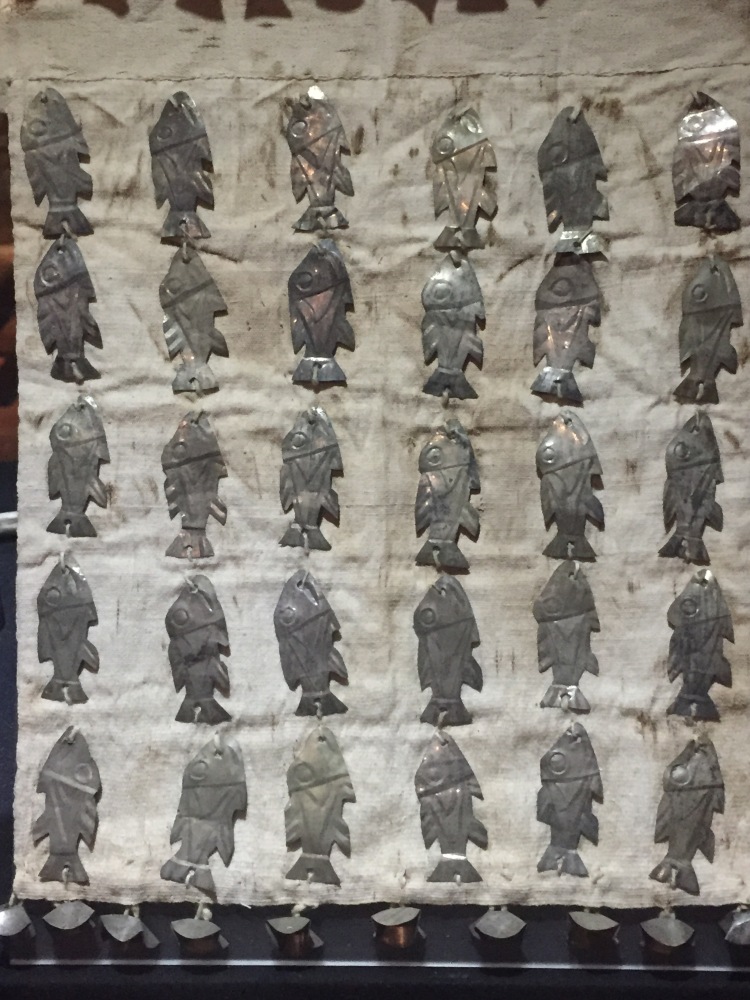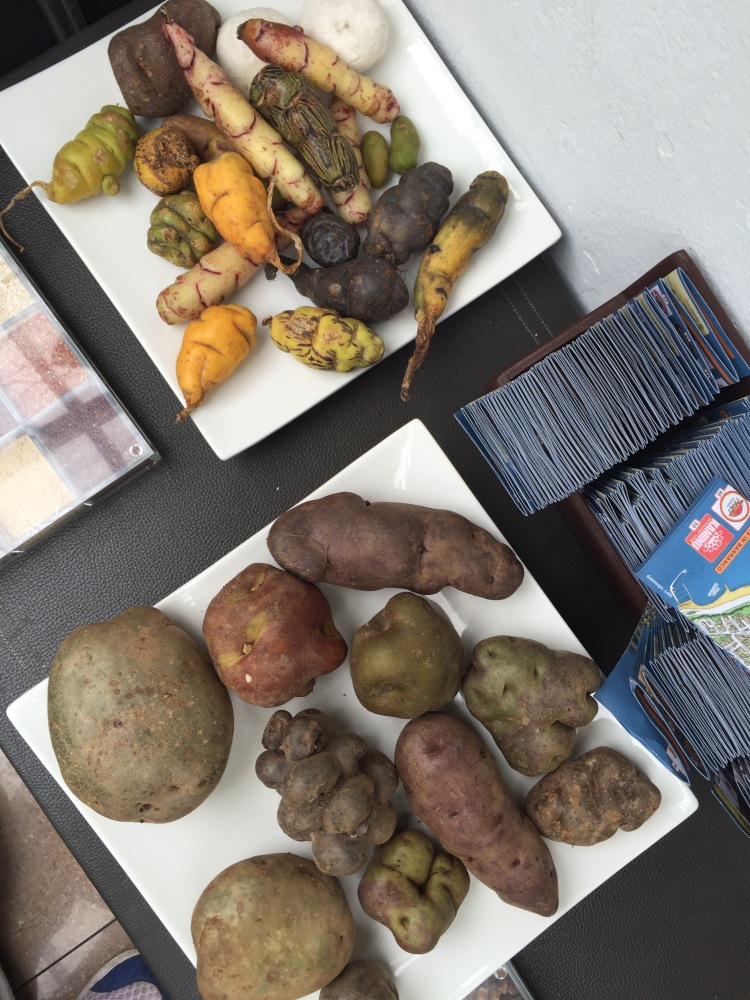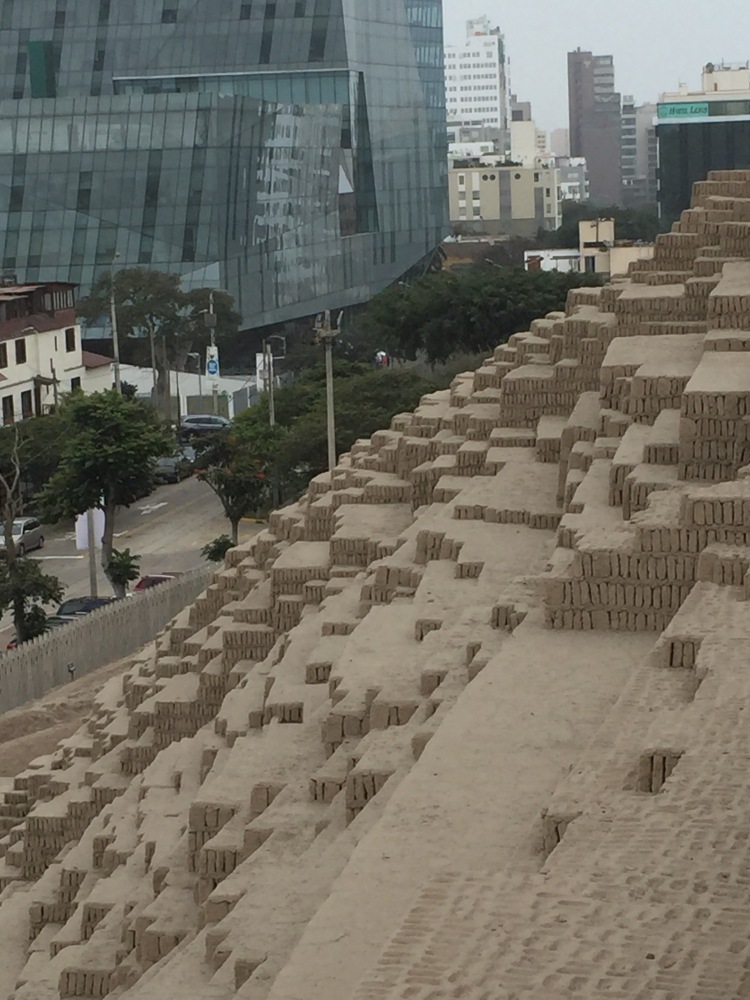As Michael can’t write an article about Lima without thinking about the food (which makes him want to go back there immediately) I will wrap up what we did in between meals. Update: he did some of the writing in the end, making this our first co-written article.
Lima is huge-and by that I mean HUGE! Almost 9m people in the city area. And traffic is horrible – by that I mean HORRIBLE. For the 20km from Miraflores to the airport at rush hour took us 2 hours – to the steady rhythm of about 1 honk/second. And it feels like the car alarm of most vehicles goes off at least once a day. One more thing to mention is that during their winter time there is hardly any sun, it is foggy/cloudy most of the time with temperatures around 18C/65F. For me that got a bit depressing after a while (as for example it isn’t really very inviting to sit in a park) but hey, maybe I have just already forgotten what winter in Switzerland feels like.
But apart from that: we really liked Lima! Let’s try and put our adventures into historical order:
Pre-Inca:
We visited the pyramid of Huaca Pukllana which are in the center of Miraflores and climbed around on tour for an hour. The originators (the Lima Culture, well pre-Inca) used a style of brick building reminiscent of bookshelves – hence why the structure has survived centuries of earthquakes and abuse.
For our first introduction to Inca culture we visited the Museo Larco. Housed in a beautiful colonial villa with a colourful flower garden the exhibition gives a thorough overview on Incan history & customs through numerous pieces of pottery, clothing, jewelery. Very good to see if you want to learn just about the Inca and look at some spectacularly lurid pots.

If you are looking for a wider overview on Peruvian art and history we recommend the Museo de Arte de Lima (MALI) which covers a broader time period. Interesting to see the quick change of medium from Incan pottery and silver (16th century) to suddenly drawing portraits and bible scenes on canvas (with the colonisation from 17th to early 19th).

After independence, there was a bit of a fight over the decades between the artists and schools that wanted to follow international art trends and those who (with political pressure) looked back to reinterpret pre-colonial influences into a national art (not unlike socialist realism, except with more Incans). Needless to say, this political interference had a chilling effect on the modernists, and it’s taken until recently for Lima and Peru to rediscover its place at the forefront of contemporary art and culture.
Lima’s Centro Historico is worth a visit, even if you elect to shell out for an Uber to get there from Miraflores. The core area around the Plaza Mayor is dotted with exceptionally restored colonial-era buildings. We especially liked the Desamprados train station which has now been repurposed as a library and house of literature.

The nearby Chinatown is a bit more down at the heels, though of course we ate well. Also, anything north of the Pan Am highway looks quite sketchy. So we walked south to Plaza San Martin, which seemed to be the southern boundary of the nice area.
The new centre of town, at least for the wealthier population and for tourists, are the districts of Miraflores (think West Village or SF) and Barranco (think Williamsburg). Both bordering the sea, they have vista-rich promenades with parks (like the Parque del Amor in the featured pic), shopping (Larcomar – a mall in the cliff), bars and restaurants. As our accommodation was in Miraflores we spent a lot of time in the area walking around, going to the hairdresser (found out I haven’t learned the Spanish word for “shoulder-length”…but hey, 20$ for cut and highlights!), attending a rooftop cooking class, watching soccer in a German pub, perusing (perusing in Peru, jajaja) stores selling everything Alpaca….etc.
Yes, one of Lima’s newest attractions can only be called futuristic (-; The Parque de la Reserva only really gets interesting at night when the 20 or so water features light up providing good fun, wet clothes and endless cheesy romantic photo opportunities.

One week might have been stretching the sights of Lima a little bit, especially as public transport is hard to work out and after a while even the Uber bills started to add up. But there was so much good food to be had and it was nice to be in one place for a longer time.




